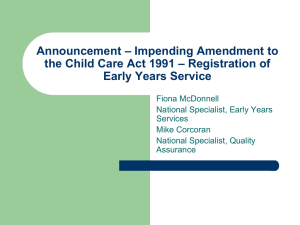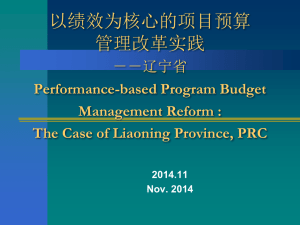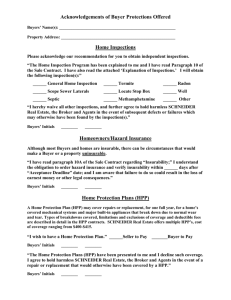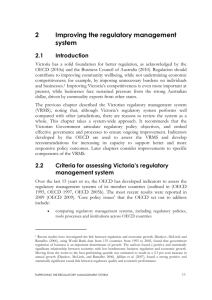Dutch Inspection Reform
advertisement
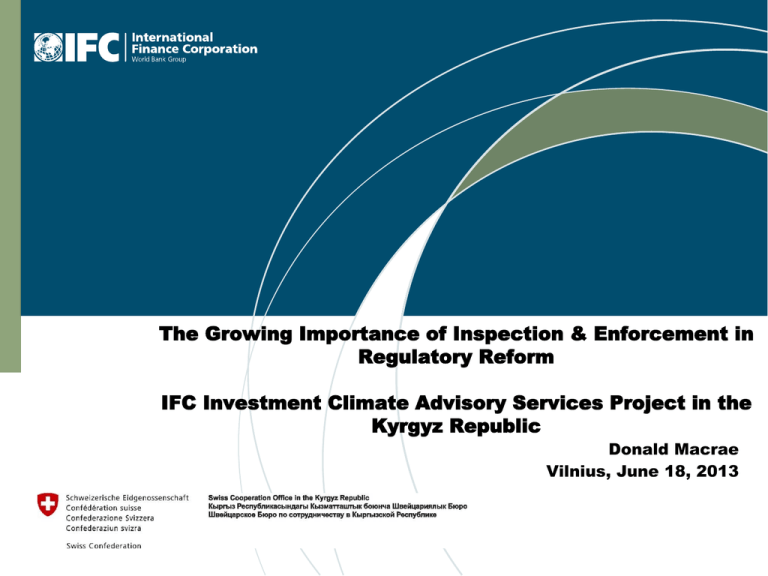
The Growing Importance of Inspection & Enforcement in Regulatory Reform IFC Investment Climate Advisory Services Project in the Kyrgyz Republic Donald Macrae Vilnius, June 18, 2013 Regulatory Delivery • The purpose of regulation is to deliver benefits to society, the environment or the economy through changing what people and businesses do. Usually, these benefits are about reducing risks to the public. • “Regulatory reform” has mainly focused on the burdens this places on businesses and has operated at the rule-making level, trying to reduce the amount of regulations. • What has received less attention is the next stage – how these regulations are implemented in practice. This is the area of “regulatory delivery”. But there has been a lot of activity . . . . 2 It started in Mexico in 1994 Investment Climate International organisations picked up the importance of improving the “investment climate” or “business environment” and have been developing projects for nearly 20 years. 4 WBG support to inspections reforms Development in OECD Countries • These organisations had been focusing on developing and transition economies because that was where they worked. But OECD countries – led by the Netherlands and the UK – started their own reforms, unaware of what was happening in the rest of the world. In 2005, the UK Hampton Review gave a huge boost to reform in this area, with risk at the heart of the analysis. The “Hampton Principles” are still seen as fundamental. 6 Dutch Inspection Reform The Hampton Review also influenced the Dutch who had been working on Inspection Reform since 2001. In 2006 they set up the Inspection Council and a five year reform programme (renewed last year) with the motto: “More effect, less burden!” 7 LBRO / BRDO In 2007, the UK established the first government agency in the world focusing on Regulatory Delivery – the Local Better Regulation Office. It worked successfully with businesses, regulators and local government to develop a better regulatory environment. In 2012, it was taken inside the Business Ministry as a Directorate, alongside the Regulatory Reform Directorate, as BRDO. 8 OECD OECD have been the custodians of mainstream regulatory reform but mainly at the rule-making level. In 2012, they started to explore inspections and enforcement, with a survey of what was being done in OECD countries. They have now launched a consultation on draft “Best Practice Principles for Improving Regulatory Enforcement and Inspections” – with comments required by 31 August. http://www.oecd.org/gov/regulatory-policy/enforcementinspections.htm 9 The London Conference This all came together in November 2012 in London in a conference hosted by BRDO: http://www.bis.gov.uk/brdo/about 180 delegates us/what-we-do/irc 36 countries 3 days of sharing experiences 10 Regulatory Delivery and Growth Better regulatory delivery can assist growth in three ways: • By reducing the negative impact (reducing the frequency of inspections, reducing corrupt payments, reducing unjustified sanctions); • By creating a “level playing field” for businesses, where they have confidence in a transparent and fair enforcement system where their competitors get the same treatment; • Occasionally, better compliance also leads to business efficiency and inspectors can provide advice that strengthens the business. 11 “роста с безопасностью” We can lose sight of the purpose of regulation and see it just as a discipline on business. If the regulatory system doesn’t deliver the public benefits, it is all pointless. So regulatory delivery also has to focus on effectiveness. “Prosperity and Protection” (LBRO) “роста с безопасностью” (Kyrgyz Technical Safety Inspectorate) Get the balance right . . . . . . . . . . 12 Institutional Change • Inspection reform has also involved significant institutional change. • The OECD survey found that many countries didn’t even know how many inspection bodies they had. • Across the world, governments are beginning to optimise the range of inspection bodies, merging inspections with related themes and ending legacy inspections that have no value. • But that also takes us into Public Service Reform, corporate management, HR management and governance. 13 Governance and Performance There are draft Laws in Armenia and Mongolia proposing that all inspection bodies: • Establish stakeholder committees as a governance system to hold them to account for delivering results; • Establish performance indicators and targets that are then monitored by the committees. In the Armenian version, some performance indicators are mandatory, related to increasing compliance rather than sanctions, and a business perception survey to measure progress in trust in the organisation. (They got the last one from the Kyrgyz Technical Safety Inspectorate.) 14 International Competency Model The UK has a set of competences for inspectors that is now beginning to be taken up as a possible international standard for inspectors. It is based on generic core skills that all inspectors need, plus added sectoral specialisms. IFC, BRDO and USAID are combining to design training for this generic model, initially in Armenia but with the intention of providing a model inspector training programme. 15 Dėkojame, kad klausytis. 16
